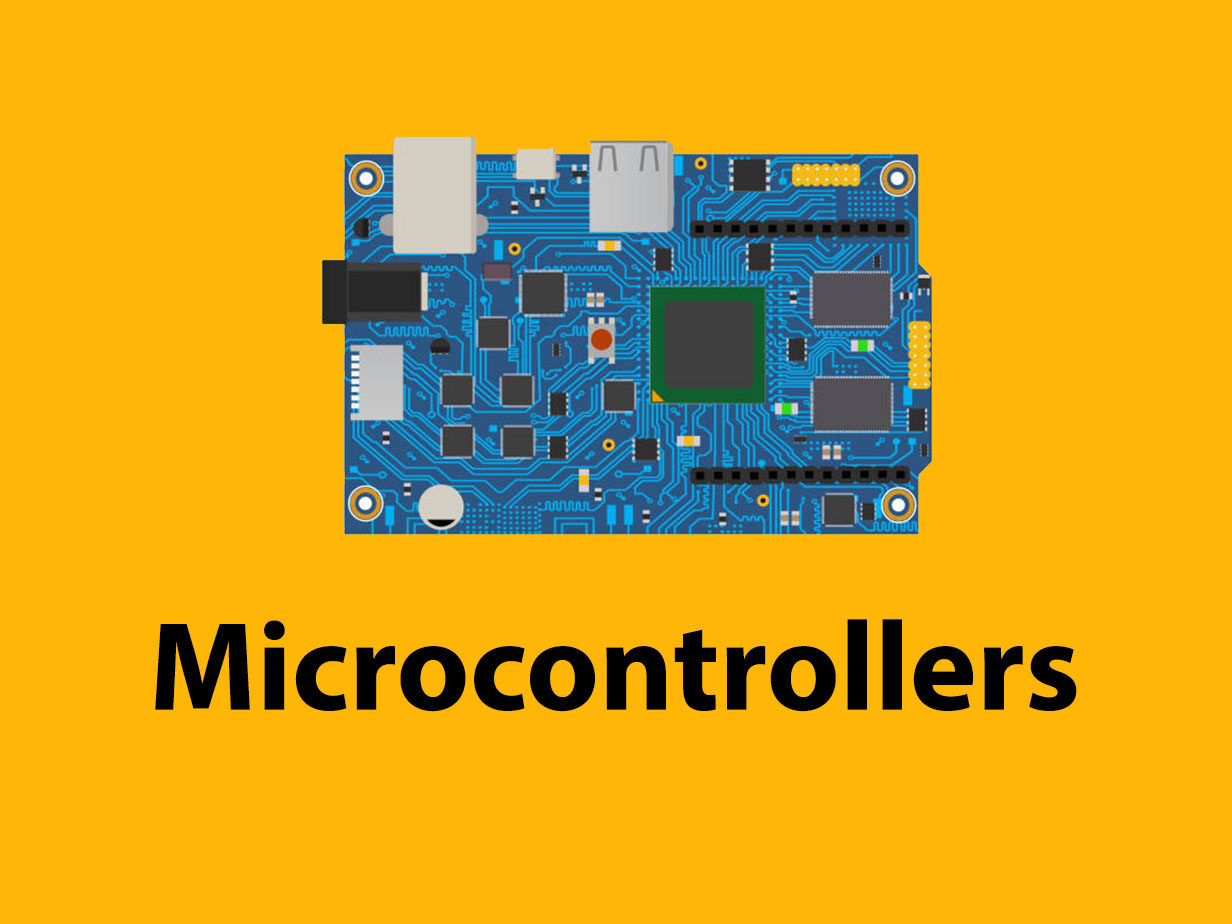Microcontroller
Free

Microcontroller
A microcontroller (MCU for microcontroller unit) is a small computer on a single metal-oxide-semiconductor (MOS) integrated circuit (IC) chip. A microcontroller contains one or more CPUs (processor cores) along with memory and programmable input/output peripherals. Program memory in the form of ferroelectric RAM, NOR flash or OTP ROM is also often included on chip, as well as a small amount of RAM. Microcontrollers are designed for embedded applications, in contrast to the microprocessors used in personal computers or other general purpose applications consisting of various discrete chips.
In modern terminology, a microcontroller is similar to, but less sophisticated than, a system on a chip (SoC). SoC may include a microcontroller as one of its components, but usually integrates it with advanced peripherals like graphics processing unit (GPU), Wi-Fi module, or one or more coprocessors. Microcontrollers are used in automatically controlled products and devices, such as automobile engine control systems, implantable medical devices, remote controls, office machines, appliances, power tools, toys and other embedded systems. By reducing the size and cost compared to a design that uses a separate microprocessor, memory, and input/output devices, microcontrollers make it economical to digitally control even more devices and processes. Mixed signal microcontrollers are common, integrating analog components needed to control non-digital electronic systems. In the context of the internet of things, microcontrollers are an economical and popular means of data collection, sensing and actuating the physical world as edge devices. Course objectives for the subject Microcontrollers is to develop background knowledge and core expertise in microcontrollers. To understand peripheral devices and their interfacing to microcontrollers. To write programs for microcontrollers and their applications in Assembly and Embedded C Language. Course outcomes: After successful completion of the course of the subject. Microcontrollers student will be able to understand the detailed architecture of 8051 and ARM7 microcontroller. Study the in-depth working of the microcontrollers and their Instruction set. Interface various peripheral devices to the microcontrollers. Write Assembly language and Embedded C program for microcontrollers. ARM7 is a group of older 32-bit RISC ARM processor cores licensed by ARM Holdings for microcontroller use. The ARM7 core family consists of ARM700, ARM710, ARM7DI, ARM710a, ARM720T, ARM740T, ARM710T, ARM7TDMI, ARM7TDMI-S, ARM7EJ-S. The ARM7TDMI and ARM7TDMI-S were the most popular cores of the family. Since ARM7 cores were released from 1993 to 2001, they are no longer recommended for new IC designs; instead ARM Cortex-M or ARM Cortex-R cores are preferred.
Chapter 8051 Microcontroller consist of the following subtopics Comparison between Microprocessor and Microcontroller, Features, architecture and pin configurations, CPU timing and machine cycle, Input / Output ports, Memory organization, Counters and timer, Interrupts, Serial data input and output.
Chapter 8051 Programming consist of the following subtopics Instruction set Addressing mode 2.3 Assembler Directives 2.4 Programs related to: arithmetic, logical, delay, input, output, timer, counters, port, serial communication, and interrupts.
Chapter 8051 Interfacing and Applications consist of the following subtopics Interfacing of Display: LED, LCD and Seven Segment display, Stepper Motor and Relay, ART
Chapter ARM7: A 32 bit Microcontroller consists of the following subtopics The RISC and the CISC design philosophy, Concept of Cortex-A, the Cortex-R and the Cortex-M , Features of ARM Microcontroller Pipeline Architecture ,Registers , Exceptions, Interrupt and Vector Table , Memory Management.
Chapter ARM7 Programming consists of the following subtopics Data Processing Instructions, Conditional and Branching Instructions, ARM-THUMB Interworking, ingle-Register Load-Store Instructions, Stack Instructions, Software Interrupt Instructions. Chapter ARM Programming with Embedded C consists of the following subtopics General Purpose Input Output Timer Mode, Pulse –Width Modulator Configuration.
Suggested Text Books for the subject Microcontrollers are as follows M. A. Mazidi, J. G. Mazidi and R. D. Mckinlay, “The 8051 Microcontroller & Embedded systems”, Pearson Publications, Second Edition 2006. C. Kenneth J. Ayala and D. V. Gadre, “The 8051 Microcontroller & Embedded system using assembly & ‘C’ ”, Cengage Learning, Edition 2010. Satish Shah, “The 8051 Microcontrollers”, Oxford publication first edition 2010. Andrew Sloss, Dominic Symes, and Chris Wright, “ARM System Developer’s Guide” Morgan Kaufmann Publishers, First Edition 2004. Lyla Das, “Embedded Systems: An Integrated Approach”, Pearson Publication, First Edition 2013. James A. Langbridge, “Professional Embedded Arm Development”, Wrox, John Wiley Brand& Sons Inc., Edition 2014.
Prepare For Your Placements: https://lastmomenttuitions.com/courses/placement-preparation/
![]()
/ Youtube Channel: https://www.youtube.com/channel/UCGFNZxMqKLsqWERX_N2f08Q
Follow For Latest Updates, Study Tips & More Content!
Course Features
- Lectures 8
- Quizzes 0
- Duration 50 hours
- Skill level All levels
- Language English
- Students 385
- Certificate No
- Assessments Yes
-
Musharaf
Very good explanation
Plz continue this




![WhatsApp Image 2020-06-26 at 12.15.44 PM First Year Sem 2 MU NEP [ Comps – IT – AIML Branch ]](https://lastmomenttuitions.com/wp-content/uploads/2020/02/WhatsApp-Image-2020-06-26-at-12.15.44-PM.jpeg)